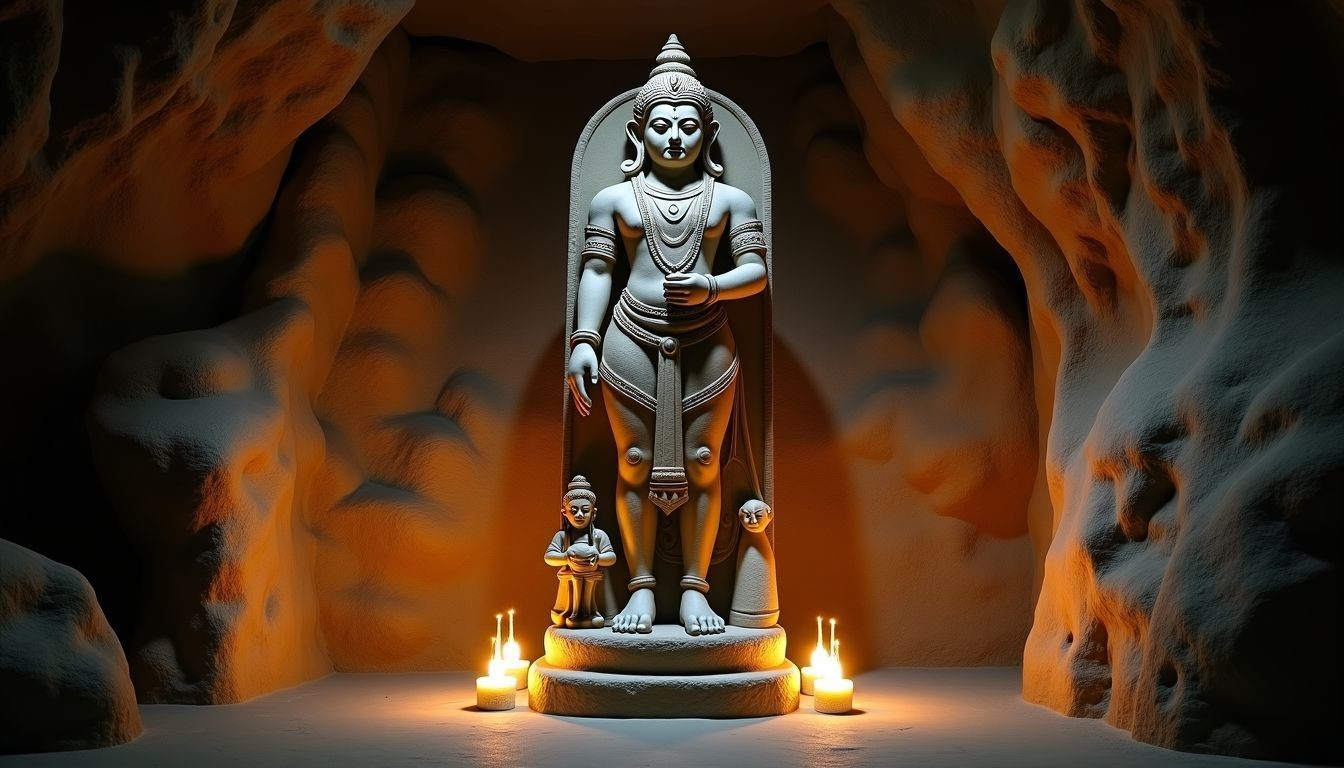Batu Caves is one of Malaysia’s most famous landmarks. Located in Kuala Lumpur, it holds deep historical and cultural importance. These limestone caves were discovered in the late 19th century and later became a sacred site for Hindus.
A massive golden statue of Lord Murugan stands tall at its entrance, symbolising faith and devotion.
The caves are not just about history; they play a major role during the Thaipusam Festival. Each year, thousands of devotees and visitors gather here to celebrate this vibrant event.
Batu Caves is especially important to Tamil Hindus in Malaysia, as it strengthens their spiritual roots.
This iconic place connects tradition with culture. Let us explore its rich past and meaning together!
Historical Timeline of Batu Caves
Batu Caves holds a rich past tied to faith and culture. Its journey from nature’s wonder to a sacred Hindu site is truly fascinating.
Discovery in the Late 19th Century
In the late 19th century, British explorers stumbled upon these majestic limestone caves. Nestled near Kuala Lumpur, they held natural beauty and historical charm. Local Temuan people already knew of them but saw them as sacred places.
- Thamboosamy Pillai recognised the caves’ potential for Hindu worship. Inspired by Indian mythology, he dedicated the Temple Cave to Lord Murugan in 1891. This marked its beginning as a Hindu shrine.
leading us into its religious development next!
Development as a Hindu Shrine
- Thamboosamy Pillai, an Indian trader, saw the caves’ potential in 1891. He dedicated them to Lord Murugan and built a temple inside the main Temple Cave. This marked Batu Caves as a sacred Hindu site.
The limestone hill now houses several shrines, including Ramayana Cave and Art Gallery Cave. Pilgrims flock here during the Thaipusam Festival to honour Lord Murugan. The towering golden statue of Lord Murugan at the entrance stands as a beacon for devotees and travellers alike.

Modern Renovations and Preservation Efforts
The Batu Caves have seen many changes over the years. The towering golden statue of Lord Murugan, built in 2006, draws visitors from around the world. It stands 42.7 metres tall and shines brightly against the limestone hill backdrop.
Colourful stairs leading to the Temple Cave were painted in vibrant hues in 2018. These steps, with their bright colours, make for stunning photos (and a good climb). Efforts also include maintaining quieter areas like the Dark Cave to preserve its natural beauty and protect wildlife such as bats and rare spiders.
Cultural and Religious Significance
Batu Caves plays a big role in faith and traditions. It brings people together through festivals and sacred rituals.
Role in the Thaipusam Festival
The Thaipusam Festival draws thousands of Hindu devotees and curious travellers each year. It celebrates Lord Murugan and takes place at the temple cave in Batu Caves near Kuala Lumpur.
This event symbolises devotion, penance, and faith. Pilgrims carry “kavadis” (decorated frames) as offerings, often pierced through their bodies to show dedication.
A golden statue of Lord Murugan stands tall outside the limestone hill—a striking sight for visitors. Colourful processions fill the area during this Hindu pilgrimage. The steps leading to the cathedral cave become alive with music, rituals, and prayers.
It’s an unforgettable cultural experience filled with vibrant traditions!
Importance to the Tamil Hindu Community
Batu Caves stands as a vital place for Tamil Hindus in Malaysia. It is home to several Hindu shrines and temples, especially the temple cave devoted to Lord Murugan. This limestone hill represents their spiritual roots and culture.
Many Tamil families visit it yearly, passing down traditions to new generations.
The annual Thaipusam festival adds even more meaning here. Thousands come together on this pilgrimage, showing faith and unity. The golden statue of Lord Murugan at the entrance symbolises strength and protection for devotees.
Batu Caves keeps Tamil Hindu heritage alive while welcoming travellers curious about its religious role.
Conclusion
The Batu Caves are more than just a tourist spot. They hold deep history and cultural importance. From the towering golden statue of Lord Murugan to the sacred Hindu temples, every corner has a story.
Visitors can feel the spirit of devotion and admire its natural beauty. It’s truly a place that leaves an unforgettable impression.



Comment (0)